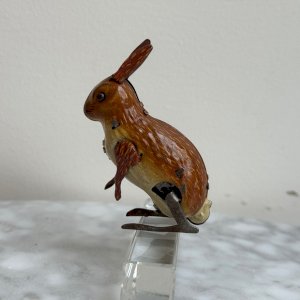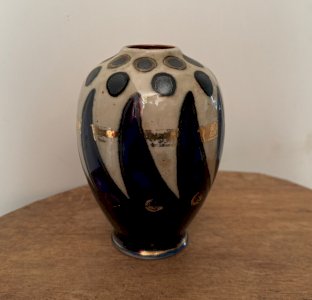- Sell Now
- Home
-
FURNISH
All STORAGE FURNITURE • Wardrobe • Chests of drawers, Chiffonnier • Sideboard • Shelves, Bookshelves • File cabinet • Sewing Furniture • Bar cabinet • TV Stand • Trunk, Chest TABLE & BEDSIDE TABLE • Dinner Table • Coffee table, side table, end table & Bedside • Console, Pedestal table & Selette • Serving Table, Trolley • Card Table • Draper's counter & table SEAT • Sofa • Armchair • Chair • Stool • Bench • Daybed • Beanbag & Footrest • Deckchair & Outdoor DESK, SECRETARY, DRESSING TABLE GARDEN LOUNGE BEDDING • Bed • Bedhead • Cradle, Moses basket CRAFT FURNITURE, WORKSHOP • Workbench • Stool, Ladder, Step • Easel & Trestle SCREEN PIANO
-
DECORATE
All TO PUT • Sculpture, Statuette • Vase & Planter • Dame Jeanne, Bonbonne & Flacon • Bridal globe, Dome • Pin tray, Ashtray • Candlestick & Candle • Photo frame • Stone, Fossil, Mineral • Earth Globe MIRROR WALL DECORATION • Painting • Engraving & Illustration • Poster • Tapestry • Wall Frame • Plate & Sign • Juju Hat & Wall Paniel • Mask • Hunting Trophy • Other object to hang CLOCK, PENDULUM & ALARM CLOCK ARRANGEMENT • Jar, Box & Case • Basket, Wastebasket & Crates • Magazine Rack & Vinyl Holder • Display & Spinner • Coat hook & Coat rack • Furniture Valet & Mannequin • Towel Holder • Suitcase & Travel Bag • Bottle Rack • Umbrella holder BATHROOM OFFICE • Mail holder • Bookends • Sulphide & Paperweight • Stationery FIREPLACE ACCESSORIES HOBBIES • Vintage Sport • Music • Vintage device • Smoking Item • Militaria, Ancient weapon • Miniature Vehicle • Game, Playing Cards • Collection object & Curiosity BIRD CAGE RELIGION, SPIRITUALITY
- TEXTURE
- ILLUMINATE
-
ACCOMODATE
All TABLE & SERVING • Plate • Silverware • Knife Holder • Glass • Bowl, Mug, Cup • Bowl, Ramekin & Cup • Dish, Cup & Salad Bowl • Tray, Basket & Server • Table Mat • Pitcher, Carafe, Bottle, Tea & Coffee Jug • Ice Bucket • Salt & Pepper shakers, Oil & Vinegar shakers • Sugar and jam maker • Gravy boat • Butter dish • Egg cup • Terrine OLD BALANCE CUTTING BOARD GRINDER CASSEROLE, SAUCEPAN & PAN KITCHEN UTENSIL & ACCESSORY
- TINKER
- KIDS
- Jewelry & Accessories
Login
Related Products
Description
CERAMIC STRIP 1940 LARGE SIZE ZOOMORPHIC SCULPTURE VINTAGE SIGN C2531 This ceramic stripe dates from the 60s The technique is interesting, there is a glaze and enamelling It is spectacular by its large size 41 cm high 51.3 cm and by its weight 13.8 kilos. For this reason only a hand delivery is possible. It is not in perfect condition, note the presence of some gaps and jumps of enamel. The more important imperfections were taken in full plan, do not hesitate to zoom in on the images. It remains very decorative. For the condition thank you for detailing the photos.The photos are an integral part of the description.Dimensions: Height: 41 cmDepth: 12.8 cmWidth: 51.3 cmWeight: 13.8 kilos 9USZBCGR Son of the painter Henri Lebasque, Pierre Lebasque faitses secondary studies at the Lycée Carnot in Cannes. Very early on, he developed a passion for the study of aquatic fauna. Encouraged by his brother-in-law, the ceramicist Jacques Lenoble (1902-1967), he became familiar with the earth. It is as a sculptor rather than an enamelist that he tackles an animal theme (studies of birds and fish) with a powerful and vigorous model enamelled with bright colors. LeBasque multiplies the sketches taken on the spot at the Vincennes zoo and the Jardin des Plantes He is also a member of the Société des animaliers and regularly exhibits his works at the GalerieMalesherbes in Paris. He began by presenting his work at the Salon d'Automne in 1930, quickly became a member of the Salon des Artistesdécorateurs and member of the Steering Committee of the National Society of Fine Arts.Pierre Lebasque is considered one of the pioneers of contemporary ceramics with the group of French Craftsmen. contemporary exhibits regularly at Rouard. The ceramist is particularly noted for the richness of his enamels, obtained by successive firing and the very modern spontaneity of the modeling. Invited in 1935 by Georges Lechevallier-Chevignard, director of the Manufacture de Sèvres, to work for three months in his workshops, he produced a series of pieces. unique. For the International Exhibition of Arts and Techniques of 1937, he presented a dozen ceramics and obtained the commission of two monumental fountains, one intended for the Architecture pavilion, the other for the Ceramics pavilion. During the war, demobilized, Pierre Lebasque fell back with his family to Marseille, where he opened the small Ceramics workshop in France, oriented towards the utility. In the mid-1950s, he settled in Le Cannet on the Côte d'Azur and taught ceramics at the technical lycée in Cannes. He also became artistic director of the ceramic factory Les Clausonnes. La Pieuvre, created around 1955, acquired by the National Museum of Modern Art and deposited at the Museum of Decorative Arts in 1983, takes up the tradition of mixed earth (distant ancestor of Italian Renaissance ceramics ) typical of the south of France.Pierre Lebasque was one of the first to experiment with enamelled lava (often used for industrial purposes) for artistic purposes. During the 1960s, the artist presented several pictorial and ceramic researches at the Katia Granoff gallery in Paris. (Source: 20th Century Ceramics catalog, 2006 Decorative Arts Museum) I remain at your disposal for any questions.
Réf :
#17603
Color(s) : Green
Material : Ceramic
Comments
Related Products
Description
CERAMIC STRIP 1940 LARGE SIZE ZOOMORPHIC SCULPTURE VINTAGE SIGN C2531 This ceramic stripe dates from the 60s The technique is interesting, there is a glaze and enamelling It is spectacular by its large size 41 cm high 51.3 cm and by its weight 13.8 kilos. For this reason only a hand delivery is possible. It is not in perfect condition, note the presence of some gaps and jumps of enamel. The more important imperfections were taken in full plan, do not hesitate to zoom in on the images. It remains very decorative. For the condition thank you for detailing the photos.The photos are an integral part of the description.Dimensions: Height: 41 cmDepth: 12.8 cmWidth: 51.3 cmWeight: 13.8 kilos 9USZBCGR Son of the painter Henri Lebasque, Pierre Lebasque faitses secondary studies at the Lycée Carnot in Cannes. Very early on, he developed a passion for the study of aquatic fauna. Encouraged by his brother-in-law, the ceramicist Jacques Lenoble (1902-1967), he became familiar with the earth. It is as a sculptor rather than an enamelist that he tackles an animal theme (studies of birds and fish) with a powerful and vigorous model enamelled with bright colors. LeBasque multiplies the sketches taken on the spot at the Vincennes zoo and the Jardin des Plantes He is also a member of the Société des animaliers and regularly exhibits his works at the GalerieMalesherbes in Paris. He began by presenting his work at the Salon d'Automne in 1930, quickly became a member of the Salon des Artistesdécorateurs and member of the Steering Committee of the National Society of Fine Arts.Pierre Lebasque is considered one of the pioneers of contemporary ceramics with the group of French Craftsmen. contemporary exhibits regularly at Rouard. The ceramist is particularly noted for the richness of his enamels, obtained by successive firing and the very modern spontaneity of the modeling. Invited in 1935 by Georges Lechevallier-Chevignard, director of the Manufacture de Sèvres, to work for three months in his workshops, he produced a series of pieces. unique. For the International Exhibition of Arts and Techniques of 1937, he presented a dozen ceramics and obtained the commission of two monumental fountains, one intended for the Architecture pavilion, the other for the Ceramics pavilion. During the war, demobilized, Pierre Lebasque fell back with his family to Marseille, where he opened the small Ceramics workshop in France, oriented towards the utility. In the mid-1950s, he settled in Le Cannet on the Côte d'Azur and taught ceramics at the technical lycée in Cannes. He also became artistic director of the ceramic factory Les Clausonnes. La Pieuvre, created around 1955, acquired by the National Museum of Modern Art and deposited at the Museum of Decorative Arts in 1983, takes up the tradition of mixed earth (distant ancestor of Italian Renaissance ceramics ) typical of the south of France.Pierre Lebasque was one of the first to experiment with enamelled lava (often used for industrial purposes) for artistic purposes. During the 1960s, the artist presented several pictorial and ceramic researches at the Katia Granoff gallery in Paris. (Source: 20th Century Ceramics catalog, 2006 Decorative Arts Museum) I remain at your disposal for any questions.
Réf :
#17603
Color(s) : Green
Material : Ceramic
 English
English  Français
Français 




























